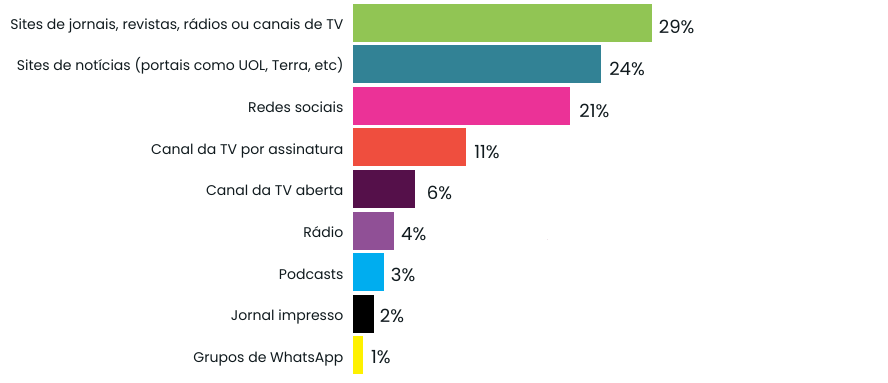A study presented by Fundamento Grupo de Comunicação showed that 87% of people follow the news daily
Fundamento Grupo de Comunicação released the results of the third edition of the survey “How do Brazilians get information?”, at an event held in the ESPM auditorium, this Wednesday (7).
The study, carried out by Fundamento Análises, had institutional support from the National Association of Magazine Editors (ANER) and the Palavra Aberta Institute, in addition to institutional support from ESPM, and aims to outline an overview of how Brazilians are informing themselves and to point out the sources that are considered reliable.
In total, the survey interviewed more than a thousand people between June 5 and July 4, 2024 and took into account people over 18 years of age, all regions of the country, gender, social class, level of education and occupation.
According to the data presented, 87% of people stated that they follow the news daily. Of these, people over 60 years of age are those who follow the news the most (96%), compared to people between 18 and 29 years of age, who are the least constantly informed (57).
On the other hand, 9% indicated that they get information two to four times a week, compared to 3% who responded that they never keep up.
Among the media most used by respondents, traditional media comes first, including newspaper, magazine, radio and TV channel websites, with 29% of the preference. Next are news websites (24%), social networks (21%), subscription TV channels (11%), podcasts (3%), printed newspapers (2%) and, finally, WhatsApp groups (1%).
In terms of education, the data showed that respondents who have completed elementary education are among the audience that most accesses news sites (40%) and social networks (50%).
Where trust is — and isn’t
The study also asked respondents what their main sources of information were. In the Top 5, 108 of them pointed to UOL, 98 to ICL, 83 to GloboNews, and 67 to G1.
The list of the top ten also includes Jovem Pan, with 51, Brasil 247, with 43, CNN, with 41, Revista Oeste, with 40, and, finally, Folha de S.Paulo, with 26, tied with O Estado de S. Paulo.

When considering the age of those interviewed, people aged between 18 and 29 stated that their main source of information is G1, while people aged between 30 and 49 opt for UOL, and those aged between 50 and over 60 opt for ICL Notícias.
Regarding trust, 13% of those interviewed indicated that they “always” trust printed newspapers, while 11% trust news websites and newspapers, radios, magazines and TVs, 9% trust subscription TVs and radios and 8% trust open TVs.

On the other hand, 35% of respondents admitted that they do not trust social networks and 64% do not trust WhatsApp groups, showing that traditional media still leads the population’s trust.
Another piece of data shown through the survey is that people are more suspicious of the news they receive. Of those interviewed, 42% said they always distrust any information they receive.
The use of AI in the news is also something that has worried the population and 42% of those interviewed stated that they have already received informative content created through technology, but what draws attention is the fact that 43% of them do not know whether they have already received this type of content.






